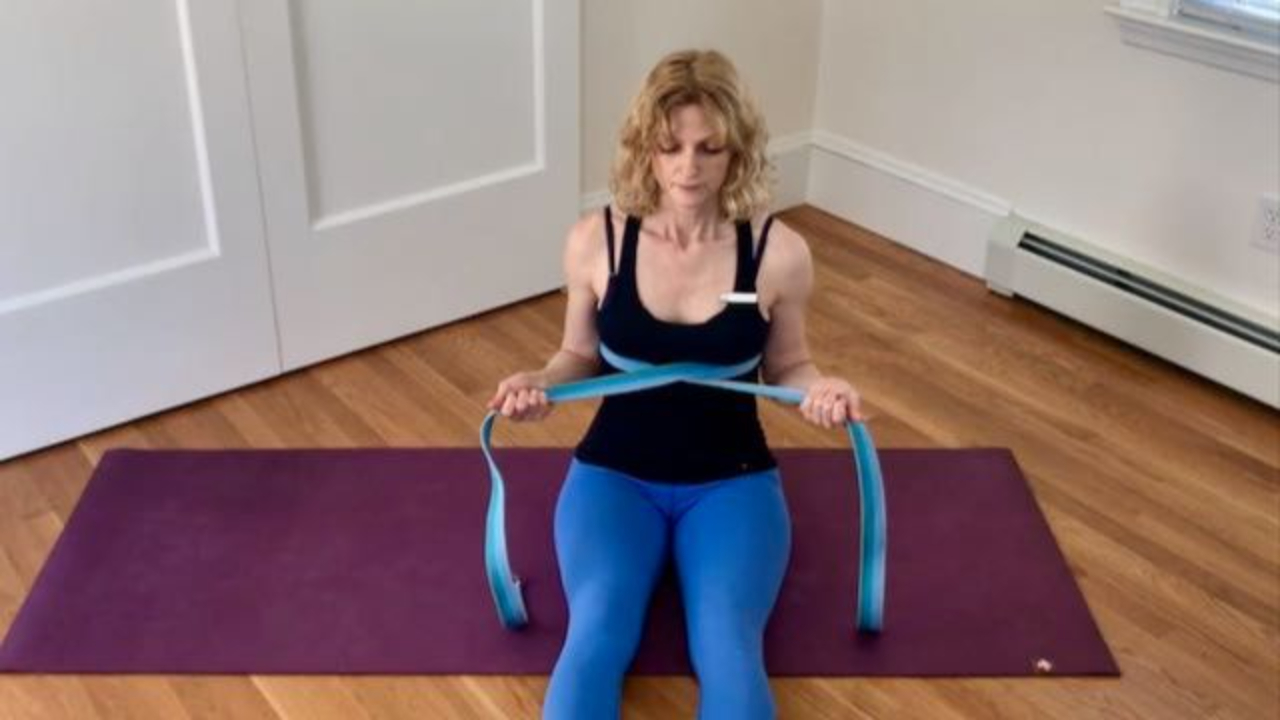
Are You Breathing Correctly? Exploring Pilates Breathwork
Dec 05, 2015Have you been wondering if there is a right and wrong way to breathe in Pilates?
I'm assuming you already know how to breathe (or you wouldn't be reading this article.) But in Pilates we put a lot of emphasis on the breath and it can seem like we're not breathing correctly.
Take a breath right now. Feel how it moves through the body. Notice how and where it goes. According to Jospeh Pilates, breathing is like an internal shower, invigorating us and giving us energy through fresh oxygen while also removing carbon dioxide.
Breathing correctly was important to Joe. He wrote in his book Return to Life Through Contrology: "Above all, learn how to breathe correctly."
It’s easy to get confused with breathing because so many different methods are being taught these days. What’s most important to remember is that there isn’t just one correct technique — rather, there are different breaths for different purposes.
Diaphragmatic Breathing
If you’re used to meditation or more relaxing forms of yoga, you have probably practiced belly breathing (the technical term is diaphragmatic breathing). When we inhale, the diaphragm (a dome shaped muscle that lies below your lungs) contracts into a flat shape and pulls the air into the body. On the exhalation, the diaphragm relaxes back into its dome shape and the air gets pushed out of the lunges. Belly breathing is excellent for calming the nervous system and it's very efficient. To improve your diaphragmatic breathing, place one hand on your belly (best in a seated or supine position) and allow your belly to lift and expand into your hand.
Bucket Handle Breathing
Another breathing technique that we use in Pilates is called lateral thoracic breathing. This is sometimes referred to as breathing into the sides of the ribcage or bellows breathing or bucket handle breathing.
Instead of breathing into the belly, we send the breath into the sides of the ribcage, allowing the ribs to expand on the inhale and sink back in on the exhale. For many of us, this is counter-intuitive — partly because it's unfamiliar and can take some effort. But never fear! It is precisely this effort that makes the difference. Wrap a yoga belt around your ribcage, cross it in the front your body, hold the belt in your hands in a comfortable position. when you exhale, pull the belt tight around your ribcage and as you inhale, notice your ribs pushing against your ribs. You might feel your back ribs expanding, too.

Pump Handle Breathing
We sometimes think breathing into our chest is bad, but your breastbone (sternum) must be able to lift and lower with your inhale and exhale. Place one hand on the top part of your chest and notice if it's lifting with your inhalation. If not, simply continue breathing and mentally try to direct the breath to this area.
Placing your hands on the body part you want to focus on is a great technique to increase body awareness through proprioception and even change your breathing.
So, which is the correct way to breathe? Is there even a right and wrong way?
Dr. Brent Anderson, owner of Polestar Pilates, first gave us the guideline "Breath is a tool, not a rule."
This means depending on the goal of a specific exercise or your Pilates practice in general, different ways of breathing are beneficial. As a general rule I would say, work on the way of breathing that seems limited and restricted. For example, if you're really good at belly breathing, work to move your ribs and sternum. If chest breathing comes natural to you, work on moving your belly and ribs.
In order to create balance and symmetry, it's always a good idea to strengthen the areas in which we might be weak or limited.
As we start to understand each Pilates exercise better, and learn more about the connection between the breath and movement, we can start to understand which breath best serves us. Depending on our goal, our body type, and our individual breathing patterns, each of us needs a different cue to gain maximum benefit from our Pilates practice. This is why two people practicing next to each other may be breathing in completely different ways . . . and both doing it exactly right for them. Like everything else in Pilates, it’s an individualized practice.
You'll be amazed at the difference a correct breathing practice can make. You might even find yourself stealth-practicing breathing while sitting at your desk or driving your car — your own private Pilates breathwork session anytime, anywhere!
Want to take your Pilates practice deeper? Inside Pilates Encyclopedia, you’ll find expert guidance, video tutorials, and a supportive community to help you refine your technique and get the best results.
Happy Breathing!

Get support with your day-to-day teaching challenges
Ready to Teach Pilates with Clarity and Confidence?
Sign up to receive my weekly email newsletter. It's jam-packed with Pilates articles, videos, exercise tutorials and teaching tips.
Only super valuable stuff here. No spam ever. Unsubscribe any time.












